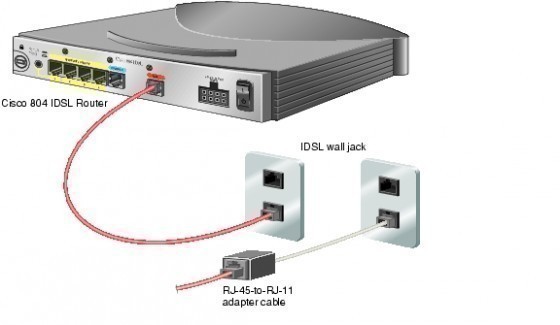IDSL (ISDN over DSL)
In the modern world of information and computer science, there are many different ways of accessing the Internet and landline telephone service. The most common form of doing so is through a DSL, or Digital Subscriber Line. DSL allows users to physically connect to a vast network of electrical signals that carry information. DSL is used for telephone services and accessing the Internet, though other means of accessing the Internet are also available. This article will define the main types of DSL and will focus specifically on the applications, advantages, and disadvantages of IDSL.
What is Asymmetric DSL
Asymmetric DSL is a form of DSL that provides more bandwidth for downloading than for uploading. This is widely used as the most popular form of DSL as most computer users download information much more than they upload it. For example, information must be downloaded to the user’s computer every time a webpage is displayed. By limiting the speed of uploads, service providers are able to dramatically increase the speed of downloads.
What is Symmetric DSL
Symmetric DSL is a form of DSL that provides equal amounts of bandwidth for both uploading and downloading. Symmetric DSL is mostly used in offices and other professional networks that often transfer large amounts of data in both directions. For example, when an office personnel member completes a form and saves it to the network as a whole, information must be uploaded to the network. On the other hand, webpages and network access still requires that data be downloaded to the user’s computer. Symmetric DSL does not mean that users have less access to uploads or downloads but simply means that data is transferred at the same speed in either direction.
What is IDSL
IDSL is a rogue system that combines DSL with ISDN. ISDN, or Integrated Services Digital Network, is a system that was used to replace dial-up so that telephones and the Internet could be used simultaneously. As IDSL is based on a dial-up process, it has a maximum speed of 128 kilobytes per second. Because of this, IDSL is rarely used in modern computer science. However, IDSL does provide a method of providing a constant stream of data in areas that tend to have bad signal quality. IDSL is usually used in conjunction with other, more modern forms of data transfer.
Applications
As was mentioned before, IDSL is commonly used in situations where signal degradation is high. For example, walls and insulation tend to block signals from reaching their destination. Because of this, signal quality can be poor or even nonexistant in certain situations. In these circumstances, IDSL is often used in order to bridge the gap between high-quality signal areas. For example, a high speed or DSL cable may be used to send data back and forth over a large office building. If there is an area within that space that interferes with the signal, an IDSL cable may be attached to two pieces of DSL cable in order to provide a more reliable data transfer.
Advantages
IDSL provides a more reliable and secure method of transferring information across a cable. IDSL is not as susceptible to interference as regular DSL and high speed is. IDSL is also usually cheaper than DSL and may provide full digital services such as caller ID, call waiting, call forwarding, call conferencing, and call barring for free.
Disadvantages
The main disadvantage of IDSL is that it is much slower than other means of data transfer. While IDSL was the first commercial approach to VoIP services, the system is outdated and is only offered by a few service providers.


Comments - No Responses to “IDSL (ISDN over DSL)”
Sorry but comments are closed at this time.